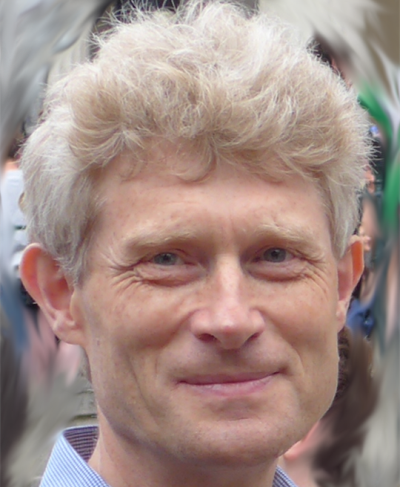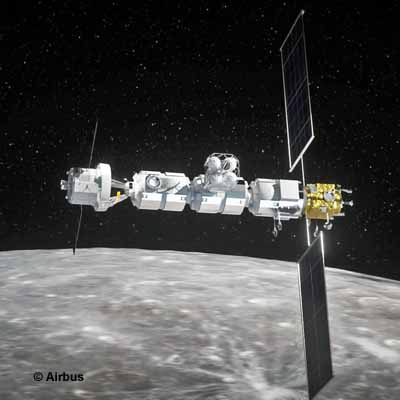Contact Professor Stephen Hobbs
- Tel: +44 (0) 1234 754658
- Email: S.E.Hobbs@cranfield.ac.uk
- ORCID
Areas of expertise
- Instrumentation, Sensors and Measurement Science
- Space Systems
- Systems Engineering
Background
Steve's academic training is in mathematics and experimental physics (Cambridge University, 1st class), then ecological physics (instrumentation and atmospheric physics; Cranfield Institute of Technology).
His research covers space systems and radar Earth observation. He recently led the European Space Agency study Hydroterra, a geosynchronous radar mission proposal to address science needs for the water cycle. Hydroterra was one of three candidates for ESA's 10th Earth Explorer mission. Research projects have included international field campaigns in US and Europe, involving ground-based and airborne measurement systems to study insect migration, land-surface / atmosphere interactions, and measurement physics for remote sensing. Another research area concerns the sustainability of space systems. He led the Cranfield University development of deorbit devices based on drag augmentation, which resulted in three successful payloads in orbit, including the first operational deployment of a drag-augmentation device in orbit. He has extensive practical experience including software development, electronics, signal processing, field experiments, and satellite payload design.
Steve has been involved in teaching space engineering subjects at postgraduate level for over 30 years, with experience running the MSc in Astronautics and Space Engineering as well as doctoral research student supervision. He is a fellow of the Higher Education Academy.
Qualifications include membership of professional societies in physics, meteorology and remote sensing.
He was funded by the Royal Academy of Engineering for an Industry Secondment to Airbus, works as the UK representative for design engineering to the ISO committee for Space Systems and Operations (ISO TC20/SC14), and is chair of the Space Academic Network's working group on Space Engineering and Technology.
Current activities
Academic interests / expertise include:
Space system engineering
Measurement physics and signal processing - especially for space sensor systems such as radar
Radar and Earth observation applications
Environmental applications - land surface and atmosphere in particular.
Current research projects:
Geosynchronous synthetic aperture radar (GEO SAR), Hydroterra mission development
Sustainable space - space debris mitigation and remediation
Low-cost de-orbit systems for small satellites (e.g. TechDemoSat-1 and ESA's ESEO mission).
Clients
His research sponsors include:
UK research councils
European Union
European Space Agency
BNSC / UK Space Agency
UK Centre for Earth Observation Instrumentation
Royal Society
US Department of Agriculture
UK space industry: SSTL, NPA Fugro, EADS Astrium
Publications
Articles In Journals
- D’Anniballe A, Felicetti L & Hobbs SE. (2025). Preliminary analysis and design of an optical space surveillance and tracking constellation for LEO coverage. Acta Astronautica, 231
- Hu C, Li Y, Chen Z, Liu F, Zhang Q, .... (2025). Distributed Spaceborne SAR: a review of systems, applications, and the road ahead. IEEE Geoscience and Remote Sensing Magazine, PP(99)
- Chen X, Chen Z, Li Y, Hu C, Dong X, .... (2024). Improving 2D resolution in geosynchronous SAR via spatial spectrum synthesis: method and verification. IEEE Journal of Selected Topics in Applied Earth Observations and Remote Sensing, 17
- Wagner W, Lindorfer R, Melzer T, Hahn S, Bauer-Marschallinger B, .... (2022). Widespread occurrence of anomalous C-band backscatter signals in arid environments caused by subsurface scattering. Remote Sensing of Environment, 276(July)
- Chen Z, Hu C, Dong X, Li Y, Tian W, .... (2021). Coherence-Based Geosynchronous SAR Tomography Employing Formation Flying: System Design and Performance Analysis. IEEE Transactions on Geoscience and Remote Sensing, 59(9)
- Serfontein Z, Kingston J, Hobbs S, Holbrough IE & Beck JC. (2021). Drag augmentation systems for space debris mitigation. Acta Astronautica, 188(November)
- Serfontein Z, Kingston J, Hobbs S, Impey SA, Aria AI, .... (2021). Effects of long-term exposure to the low-earth orbit environment on drag augmentation systems. Acta Astronautica, 195(June)
- Hu C, Chen Z, Li Y, Dong X & Hobbs S. (2021). Research progress on geosynchronous synthetic aperture radar. Fundamental Research, 1(3)
- Meroni AN, Boni G, Pulvirenti L, Monti-Guarnieri AV, Haagmans R, .... (2020). Meteorological OSSEs for new zenith total delay observations: impact assessment for the hydroterra geosynchronous satellite on the October 2019 Genoa event. Remote Sensing, 12(22)
- Chung JH, Walker CM & Hobbs S. (2020). Imaging Features of Systemic Sclerosis-Associated Interstitial Lung Disease. Journal of Visualized Experiments
- Hobbs SE, Monti-Guarnieri AV, Broquetas A, Calvet J-C, Casagli N, .... (2019). G-CLASS: geosynchronous radar for water cycle science - orbit selection and system design. The Journal of Engineering, 2019(21)
- Wang R, Hu C, Li Y, Hobbs SE, Tian W, .... (2017). Joint Amplitude-Phase Compensation for Ionospheric Scintillation in GEO SAR Imaging. IEEE Transactions on Geoscience and Remote Sensing, 55(6)
- Hobbs S & Sanchez J-P. (2017). Laplace plane and low inclination geosynchronous radar mission design. Science China Information Sciences, 60(6)
- Hu C, Ding Z, Long T, Hobbs S, Monti Guarnieri A, .... (2017). Editorial. Science China Information Sciences, 60(6)
- Andra Baduge AW, Henschel MD, Hobbs S, Buehler SA, Ekman J, .... (2016). Seasonal variation of coherence in SAR interferograms in Kiruna, Northern Sweden. International Journal of Remote Sensing, 37(2)
- Virgili Llop J, Roberts PCE, Palmer K, Hobbs S & Kingston J. (2015). Descending Sun-Synchronous Orbits with Aerodynamic Inclination Correction. Journal of Guidance, Control, and Dynamics, 38(5)
- Kingston J, Hobbs S, Roberts P, Juanes-Vallejo C, Robinson F, .... (2014). Use of CYPRES™ cutters with a Kevlar clamp band for hold-down and release of the Icarus De-Orbit Sail payload on TechDemoSat-1. Acta Astronautica, 100(1)
- Hobbs S, Mitchell C, Forte B, Holley R, Snapir B, .... (2014). System design for geosynchronous synthetic aperture radar missions - WITHDRAWN DUPLICATE: see http://dspace.lib.cranfield.ac.uk/handle/1826/9591. IEEE Transactions on Geoscience and Remote Sensing, 52(12)
- Rajbansi B, Sarkar U & Hobbs SE. (2014). Hazardous odor markers from sewage wastewater: A step towards simultaneous assessment, dearomatization and removal. Journal of the Taiwan Institute of Chemical Engineers, 45(4)
- Snapir B, Hobbs S & Waine TW. (2014). Roughness measurements over an agricultural soil surface with Structure from Motion. ISPRS Journal of Photogrammetry and Remote Sensing, 96
- Mukherjee R, Sarkar U & Hobbs SE. (2012). Source areas for a passively diffusing methane gas from South Asian paddy fields using the Flux Footprint Model. Atmospheric Research, 104-105
- Sheng W & Hobbs SE. (2011). Research on compensation of motion, Earth curvature and tropospheric delay in GEOSAR. Acta Astronautica, 68(11-12)
- Bruno D & Hobbs SE. (2010). Radar Imaging From Geosynchronous Orbit: Temporal Decorrelation Aspects. IEEE Transactions on Geoscience and Remote Sensing, 48(7)
- Hobbs S. (2010). Disposal orbits for GEO spacecraft: A method for evaluating the orbit height distributions resulting from implementing IADC guidelines. Advances in Space Research, 45(8)
- Hobbs S. (2008). Database of individual wheat plant motion in wind: Application to radar imaging of vegetation. Agricultural and Forest Meteorology, 148(11)
- Hobbs S, Seynat C & Matakidis P. (2007). Videogrammetry: A practical method for measuring vegetation motion in wind demonstrated on wheat. Agricultural and Forest Meteorology, 143(3-4)
- Hobbs SE & Aldhous AC. (2006). Insect ventral radar cross-section polarisation dependence measurements for radar entomology. IEE Proceedings - Radar, Sonar and Navigation, 153(6)
- Hobbs S. (2004). Fast freeze?. Weather, 59(8)
- Sarkar U, Hobbs SE & Longhurst P. (2003). Dispersion of odour: a case study with a municipal solid waste landfill site in North London, United Kingdom. Journal of Environmental Management, 68(2)
- Sarkar U, Longhurst PJ & Hobbs SE. (2003). Community modelling: a tool for correlating estimates of exposure with perception of odour from municipal solid waste (MSW) landfills. Journal of Environmental Management, 68(2)
- Sarkar U & Hobbs SE. (2003). Landfill odour: assessment of emissions by the flux footprint method. Environmental Modelling & Software, 18(2)
- Sarkar U & Hobbs SE. (2002). Odour from municipal solid waste (MSW) landfills. Environment International, 27(8)
- Hobbs S, Dyer D, Courault D, Olioso A, Lagouarde J-P, .... (2002). Surface layer profiles of air temperature and humidity measured from unmanned aircraft. Agronomie, 22(6)
- Hobbs SE, Longhurst P, Sarkar U & Sneath RW. (2000). Comparison of dispersion models for assessing odour from municipal solid wastes. Waste Management and Research, 18(5)
- Hobbs SE, Longhurst P, Sarkar U & Sneath RW. (2000). Comparison of dispersion models for assessing odour from municipal solid wastes. Waste Management & Research: The Journal for a Sustainable Circular Economy, 18(5)
- Hobbs S. (1997). Weather effects on SAR backscatter for agricultural surfaces. European Space Agency Special Publication ESA SP
- Hobbs SE & Wolf WW. (1996). Developments in Airborne Entomological Radar. Journal of Atmospheric and Oceanic Technology, 13(1)
- THOMAS G, HOBBS SE & DUFOUR M. (1996). Woodland area estimation by spectral mixing: applying a goodness-of-fit solution method. International Journal of Remote Sensing, 17(2)
- Hobbs SE. (1996). Climate Change 1992: The supplementary report to the IPCC scientific assessment. Journal of Atmospheric and Terrestrial Physics, 58(10)
- Hobbs SE. (1995). The atmospheric boundary layer. Journal of Atmospheric and Terrestrial Physics, 57(3)
- Hobbs SE. (1994). Calibration and performance evaluation of a lightweight propellor anemometer for micrometeorological research. Boundary-Layer Meteorology, 68(3)
- Hobbs SE. (1994). The Potential Effects of Climate Change in the United Kingdom, First Report of the U.K. Climate Change Impacts Review Group. Journal of Atmospheric and Terrestrial Physics, 56(12)
- Hobbs SE. (1994). Pollution, causes, effects and control. Journal of Atmospheric and Terrestrial Physics, 56(8)
- Hobbs SE. (1994). Environmental issues in the 1990s. Journal of Atmospheric and Terrestrial Physics, 56(4)
- Hobbs SE & Hodges G. (1993). An optical method for automatic classification and recording of a suction trap catch. Bulletin of Entomological Research, 83(1)
- Hobbs S. (1993). Global Climate Change and Freshwater Ecosystems. Journal of Atmospheric and Terrestrial Physics, 55(6)
- Hobbs SE. (1992). Climate change: Science, impacts and policy, proceedings of the second world climate conference, 29 October–7 November 1990. Journal of Atmospheric and Terrestrial Physics, 54(11-12)
- Hobbs S. (1992). Laser radar systems. Journal of Atmospheric and Terrestrial Physics, 54(11-12)
- Hobbs SE. (1992). Climate change, the IPCC scientific assessment. Journal of Atmospheric and Terrestrial Physics, 54(11-12)
- Hobbs SE. (1991). A radar signal processor for biological applications. Measurement Science and Technology, 2(5)
- Hobbs SE. (1990). Kite performance measurements in natural wind. The Aeronautical Journal, 94(932)
- Wolf WW, Westbrook JK, Raulston J, Pair SD & Hobbs SE. (1990). Recent airborne radar observations of migrant pests in the United States. Philosophical Transactions of the Royal Society of London. B, Biological Sciences, 328(1251)
- Hobbs SE & Wolf WW. (1989). An airborne radar technique for studying insect migration. Bulletin of Entomological Research, 79(4)
- Hobbs SE. (1989). Kite measurements in the boundary layer. Wind Engineering, 13(2)


